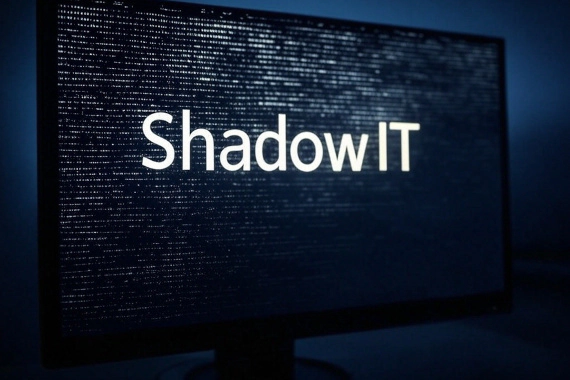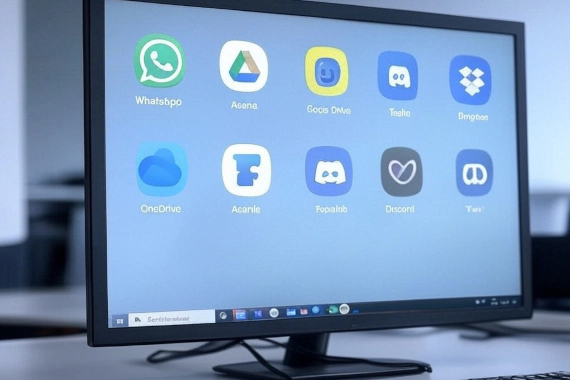Wondering how to leverage dark web monitoring to make your organization more secure?
Do you want to reset leaked employee credentials before they’re exploited?
On average, it takes companies over 200 days to identify a breach and then another 73 days to contain it.
Obviously, the faster you contain a breach, the less damage it can cause.
In this post, we’ll cover why dark web monitoring is crucial for every organization, its benefits, and how you can protect your company’s data from reaching the dark web.
What is dark web monitoring?
Dark web monitoring is a service that continuously searches, scans, and monitors the dark web for any potentially stolen or compromised data, such as internal company documents, employee passwords, session tokens, or sensitive financial details.
The dark web is a part of the internet that is not indexed by traditional search engines and is often associated with illegal activities.
Dark web monitoring services alert organizations when their sensitive information is found on the dark web, allowing them to mitigate the risk before the data is exploited.
How does dark web monitoring work?
Dark web monitoring works through a combination of automated and manual processes that involve the following steps:
- Data Collection: Dark web monitoring solutions use automated spidering tools alongside manual HumInt processes. The combined approach allows the tool to scan and collect data from various sources on the dark web, including forums, chat rooms, marketplaces, and private Telegram channels. This data can include leaked or stolen personal information, credentials, session tokens, financial details, and other sensitive data.
- Data Analysis: Collected data is verified and then analyzed to identify and extract relevant information. This involves filtering out noise and irrelevant data to focus on information that poses an actual threat.
- Alerting: If the dark web monitoring tool finds information that matches the details of a monitored asset, it generates an alert. These alerts are typically sent via email, webhook, or through a dashboard provided by the monitoring service.
- Response and Mitigation: Once an alert is received, the IT security team can take appropriate actions to mitigate the risk. This may include changing passwords, terminating session tokens, geofencing assets, or taking legal action if necessary.
- Continuous Monitoring: Dark web monitoring is an ongoing process, as new data is constantly being added to the dark web. Monitoring services continuously scan for new cyber threats and update their databases to provide real-time alerts.
Why does your business need dark web protection
Businesses need dark web protection for several reasons:
- Prevent Identity Theft: Dark web monitoring can detect if employee, customer, or vendor credentials have been exposed, allowing you to take steps to prevent identity theft and fraud.
- Protect Intellectual Property: Your business’s intellectual property, such as trade secrets, patents, or proprietary data, could be targeted and sold or leaked on the dark web. In many cases, an upstream vendor may be attacked, and your data gets leaked as part of their breach. Monitoring helps in identifying the leak and responding effectively.
- Maintain Customer Trust: A data breach can severely damage your reputation and erode customer trust. By proactively monitoring the dark web, you can prevent potential threats from escalating.
- Comply with Regulations: Many industries have regulations requiring businesses to protect sensitive data. Dark web monitoring is an essential part of a compliance strategy to detect and respond to data breaches.
- Mitigate Financial Losses: The cost of a data breach can be significant, including legal fees, fines, and loss of business. Early detection through dark web monitoring can help mitigate these financial losses.
- Enhance Security Posture: Dark web monitoring provides insights into the tactics, techniques, and procedures (TTPs) used by threat actors, helping you strengthen your security defenses and prioritize vulnerability remediation.
- Quick Incident Response: If your data is found on the dark web, you can quickly respond to the incident, contain the breach, and minimize the impact on your business.
In addition to dark web monitoring, there are a number of other steps that should be implemented to protect your data from the dark web. These include:
- Implement Strong Security Measures: Use firewalls, antivirus software, EDR and intrusion detection systems to protect your network. Implement technical solutions that prevent employees from making bad decisions. Regularly update and patch all software to fix vulnerabilities.
- Enforce Access Controls: Limit access to sensitive information to only those employees who need it for their job. Use role-based access controls and regularly review access permissions.
- Segment your network: Split up your network into multiple smaller networks. Proper segmentation ensures that even if an attacker breaches one part of the network, they are contained and prevented from moving laterally to access other sensitive areas.
- Use a password manager: All passwords should be generated by a password manager. To help prevent phishing attacks, the password manager should autofill passwords when authenticating as well.
- Implement Multi-Factor Authentication (MFA): Require MFA to add an extra layer of security for accessing sensitive systems and information.
- Encrypt Sensitive Data: Encrypt data both in transit and at rest to protect it from unauthorized access. Use ephemeral messages for sensitive discussions.
- Regularly Backup Data: Regularly back up important data and store it securely offsite and offline. This can help you recover quickly in case of a data breach or ransomware attack.
- Monitor Network Traffic: Use network monitoring tools to detect unusual traffic patterns or activities that could indicate criminal activity.
- Develop an Incident Response Plan: Have a data breach response plan in place before an incident occurs. This should include steps for containment, eradication, recovery, and communication.
- Conduct Regular Security Audits: Regularly assess your security to identify weaknesses and areas for improvement. Consider hiring external experts for penetration testing and vulnerability assessments.
How Breachsense can protect your business
Leaked employee credentials have become one of the primary attack vectors malicious actors use to gain access to their targets. One of the reasons for this is that valid credentials will bypass even the most secured networks. Organizations need continuous dark web monitoring to prevent criminals from exploiting leaked data for fraud and account takeovers. If you’re concerned about your organization’s dark web exposure, book a demo today to see how Breachsense can help.



